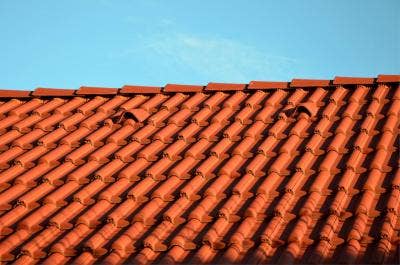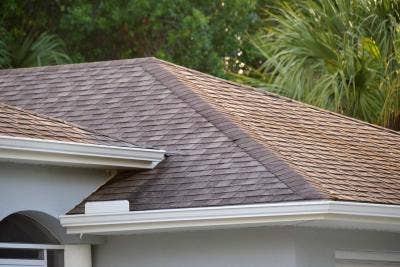The History of Slate as a Building Material
Slate has been mined from deep within the 16th-century and has had many names as well as being utilized for road surfaces and roofs. Slate is known for its durability and that amazing look it adds to buildings. This roofing product came to light, then took a dive to such extent that it almost became a part of history, although that is now in the past and the use of slate has seen a slight rise there might be a few surprises looming in the future. Slate has many aspects to consider and could proof to be a much better choice in the long run than most other roofing products.
When did slate start to be used and when did it fall out of popularity?
Large-scale slate mining in North Wales increased drastically during 1782 and by 1882 they were delivering about 92% of the total slate production in Britain. This increase was due to slate-duty falling away and railway lines being built to transport it to the coast and all over Britain. Between the 1900 and 1903 a business disagreement marked the declind in the industry and also caused a shortage and large amounts of slate had to be imported via France. This was followed by the First World War which took away great volumes of workers from this industry leaving it fragile. This was however not the end yet as it was shadowed by the Great Depression and shortly afterwards the Second World War that brought along the closure of a multitude small slate businesses.
By 1945 the production of slate had decreased drastically and more than half the quarries that was there before the war was left. The introduction of other roofing materials made the market for slate even more problematic and large quarries saw many closures during 1960s & 1970s. The 1980s brought back a mandate for slate due to government affirming that silicosis was an industrial disease and companies were held liable for recompense, this was however too late for most slate companies but the few remaining companies could gain strength from this change.
Why is it used as a building material?
Slate was and still is used today because of the many remarkable advantages it offers except for the fact that it is easily found due to slate being relatively close to the ground surface. Slate firstly offers a wide range of sizes such as blocks, tiles as well as slabs in addition to the wide range of colors it is available in. Slate has a much longer life than most other material available on the market if fitted correctly. Slate is a hard long lasting rock that can be cut and shaped to fit in with its environment.
With the use of slate there is no need for fire-treatment as they are naturally fire-proof unlike other materials which will require treatments of all kinds. Slate is also water-proof and does not serve as a home to algae or moss. If considering the replacement of other roof types every twenty to thirty years in conjunction to the wastage of these materials then compared to slate which will last longer than a 100 years one can easily see the environmental impact. The color of slate is ensured unlike other roofing materials and does not disintegrating at all. For a perfect look slate can offer your house an impeccable elegance and style like no other roofing material.
What are the disadvantages of slate?
Although slate offers you unique lasting roofing options one has to also consider the few negative point to using slate as a roofing solution. Firstly you will have to ensure your house structure is strong enough as slate has a great weight of up to 1500 pounds per hundred square feet.
Correct installation will also prove to be a big issue for concern as there are not many contractors that knows exactly how to install slate thus you might as well have no roof at all. Make sure that the contractor you hire has the needed knowledge but moreover the experience to install slate. Slate looks great and adds to the value of your property unless installed incorrect. The contractor has to install your slate roof according to set standards in order to provide you with all the qualities that slate has to offer.
When looking to use slate as a roofing option please keep in mind that the cost could be more than double that of other roofing materials although if compared to appearance, fire resistant provisions needed for other roofing materials, life-span as well as how environmentally friendly slate is then it is surely worth the price.
Where in the UK is slate still popular?
Although the industry has taken many knocks over the years it has not gone extinct and you can still find a few prominent slate quarries in Northern Wales, Cornwall, Scotland as well as Cumbria and Leicestershire. Some of these quarries are still standing strong and has no plans of closing; as a matter of fact most of these are making plans for the future. They produce and deliver slate throughout the UK to a large number of industries for additional refinement and use.
Slate has become a perfect option for not only roofing but also flooring and paving because of its superior qualities. It has also been used as walling or cladding for centuries and although this has seen a great decline it might actually see a rise again as people become more eco-friendly. It is also used in our modern day more than most people realize for headstones, counter tops and a range of other products.
There are even slate mines that offer people visits to explore the natural beauty of slate along with learning how the process of mining slate works. Slate has been around for eras and because of their exceptional merits this product will still be around centuries after most of us have moved along. Please take a online at our Roof Slate Category, we are sure to find a slate that suits your roof.
Our Top Videos.


How to install a Velux Integra Electric Roof Window (5 Parts)
In this five-part guide, we take you through the full installation of a Velux GGU Centre Pivot Integra Roof Window onto an...


How to install a Duratech Centre-Pivot Pine Roof Window
Once you begin unpackaging the window, you’ll find in the box the brackets, the handle and the fixings. And there will also be some instructions...
Ideas & Advice
How-tos, tutorials and videos


How and why to use or snap a chalk line
Chalk lines are the fastest way to mark straight guidelines on flat surfaces. They are used extensively in the building and construction industry to speedily and accurately ‘draw’ straight lines between two points. Chalk lines are inexpensive tools...


Skylight Blinds: A Guide To The Different Types
Like many household product, blinds for skylight windows come in all shapes, sizes, and materials. Some are designed with a tangible purpose in mind, while others are more for show. One thing’s for sure - buying any type of skylight blind...








